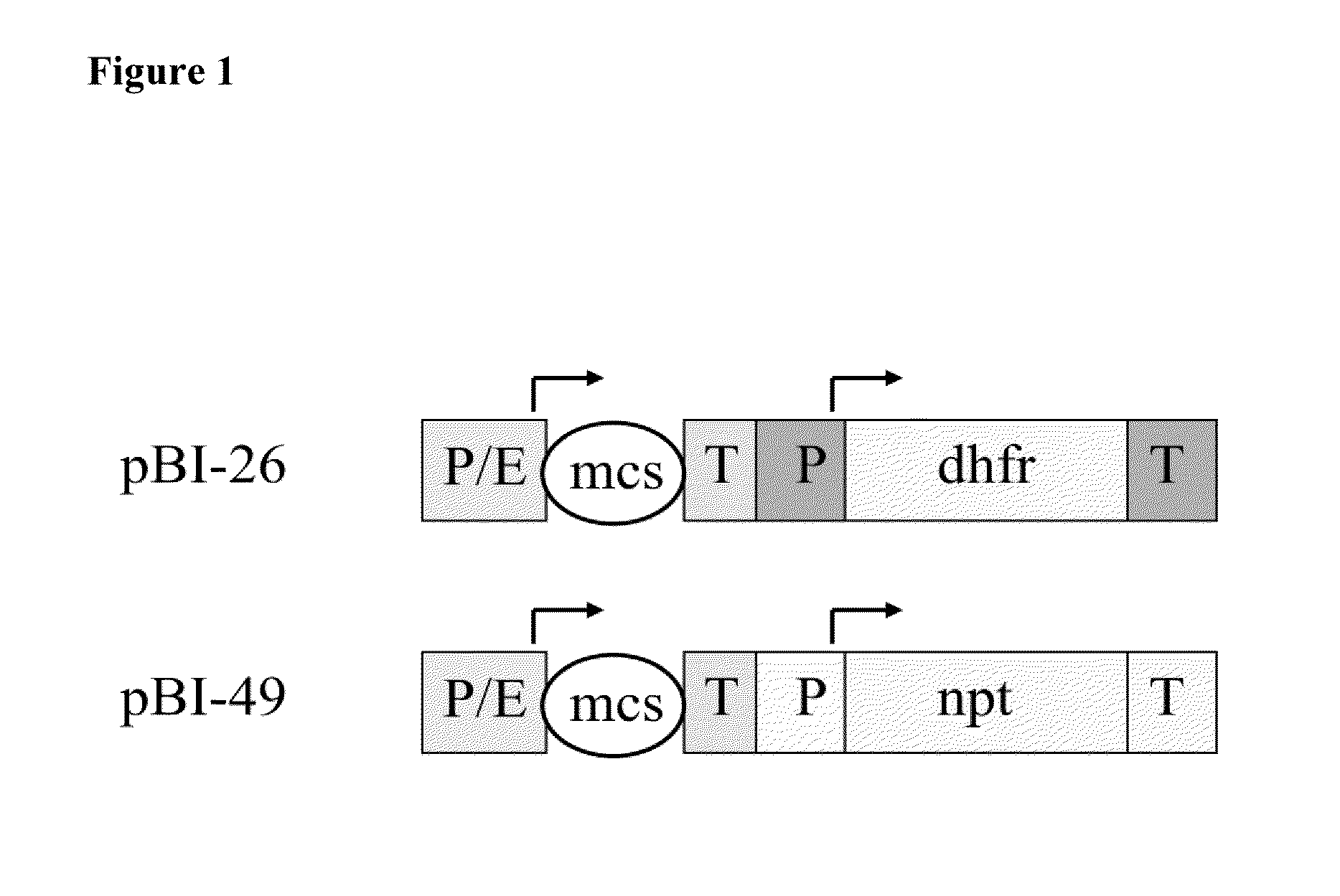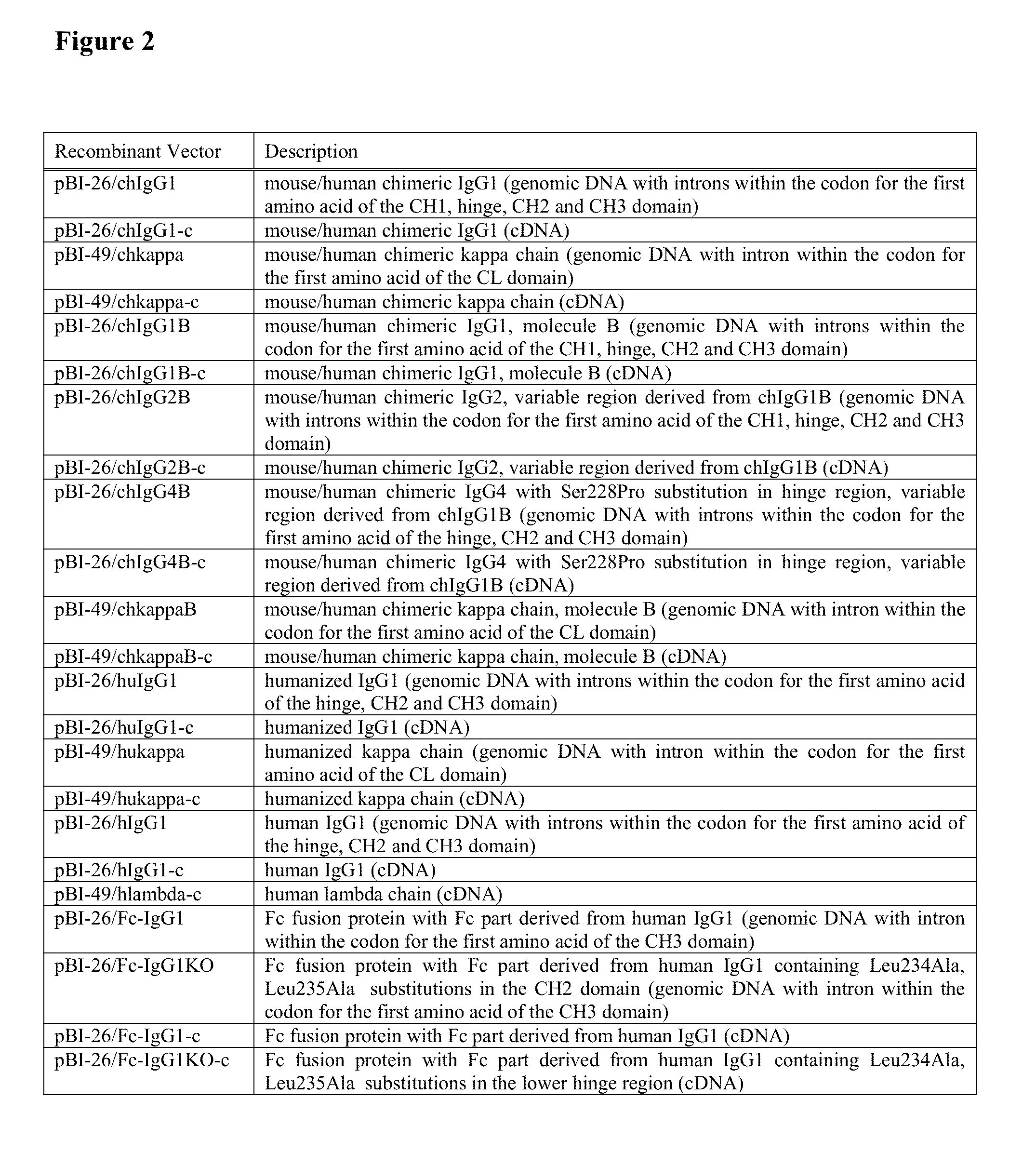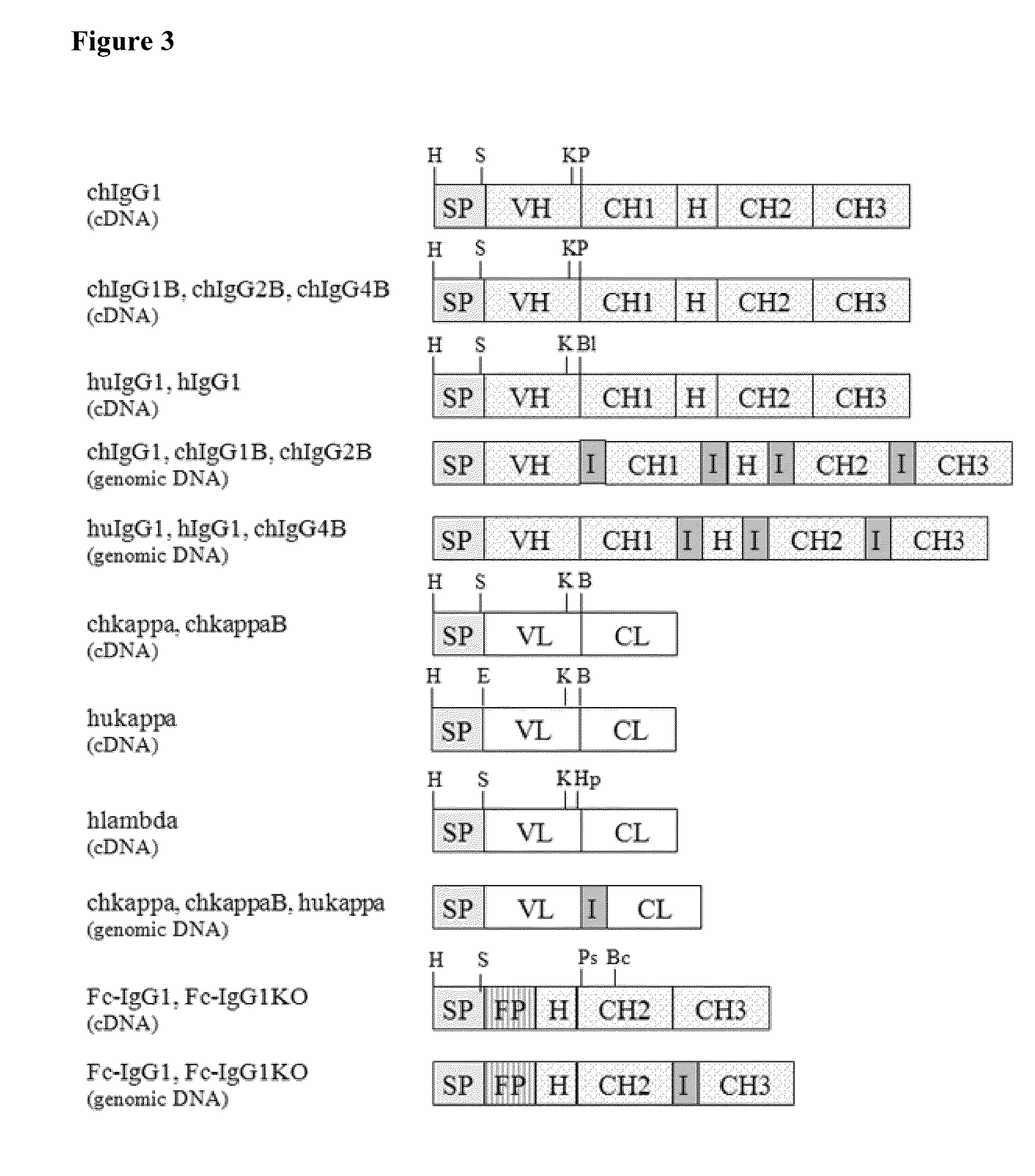Novel intron sequences
a technology of intron sequences and introns, applied in the field of recombinant gene engineering, can solve the problems of affecting the level of recombinant gene expression in eukaryotic cells, affecting the quality of recombinant gene expression, and unwanted by-products of altered protein sequences and thus properties and functions, and achieves strong and stable gene expression.
- Summary
- Abstract
- Description
- Claims
- Application Information
AI Technical Summary
Benefits of technology
Problems solved by technology
Method used
Image
Examples
example 1
Cloning of Heterologous Intron-Containing Immunoglobulin G and Fc Fusion Genes
[0224]The first intron sequence (SEQ ID NO:1, FIG. 5A) is based on the intron sequence located is between the variable and constant region of a human kappa gene. It is modified to[0225]introduce a single BglII restriction site close to the 5′ end of the intron for cloning purposes[0226]introduce sequences which can act as stop codons in case of a non-splicing event of the messenger RNA and would lead to premature translation termination of the protein[0227]introduce a conserved branch site in the 3′ region of the intron to allow for more efficient splicing.
[0228]The intron sequence is synthesized de novo at Invitrogen using the GENEART technology.
[0229]For placement of the modified kappa intron within the immunoglobulin signal peptide sequence in a position other than the natural position within the codon for the amino acid at position −4 (counting backwards from the 3′ end of the amino acid sequence of th...
example 2
Impact of Heterologous Introns on Expression of Immunoglobulin G1
[0242]To evaluate the impact of the intron sequences derived from human kappa gene (SEQ ID NO: 1) and the hamster dihydrofolate reductase (SEQ ID NO: 2) on the expression if placed within the exon regions of IgG1 molecules transient transfections are performed. Transient transfections allow assessment of the expression independent of chromosomal integration sites. The introns are placed either within the immunoglobulin signal peptide sequence (see FIGS. 6 and 7), within the variable region of the heavy and lambda light chain or between the variable region and constant region of the kappa light chain (see FIGS. 6, 8 and 9). CHO-DG44 cells are co-transfected with vectors encoding the heavy and light chain of an antibody (6.5×1010 molecules per vector). This set-up is tested with two different mouse / human chimeric antibodies (=chIgG1 and chIgG1B), a humanized antibody (=huIgG1) and a human antibody (=hIgG1). The latter co...
example 3
Impact of Heterologous Introns on Expression of Immunoglobulin G2
[0245]To evaluate the impact of the intron sequences derived from human kappa gene (SEQ ID NO: 1) on the expression if placed within the exon regions of an IgG2 molecule transient transfections are performed. Transient transfections allow assessment of the expression independent of chromosomal integration sites. The intron is placed either within the signal peptide sequence (see FIGS. 6 and 7) or within the framework 4 region of the variable region of the heavy chain or between the variable and constant region of the kappa light chain (see FIGS. 6, 8 and 9). CHO-DG44 cells are co-transfected with vectors encoding the heavy and light chain of an antibody (6.5×1010 molecules per vector). This set-up is tested with a mouse / human chimeric antibody (=chIgG2B) which contains a kappa light chain. As a control CHO-DG44 cells are co-transfected with vector combinations encoding either the cDNA of the respective antibody or the ...
PUM
| Property | Measurement | Unit |
|---|---|---|
| Tm | aaaaa | aaaaa |
| temperature | aaaaa | aaaaa |
| temperature | aaaaa | aaaaa |
Abstract
Description
Claims
Application Information
 Login to View More
Login to View More - R&D
- Intellectual Property
- Life Sciences
- Materials
- Tech Scout
- Unparalleled Data Quality
- Higher Quality Content
- 60% Fewer Hallucinations
Browse by: Latest US Patents, China's latest patents, Technical Efficacy Thesaurus, Application Domain, Technology Topic, Popular Technical Reports.
© 2025 PatSnap. All rights reserved.Legal|Privacy policy|Modern Slavery Act Transparency Statement|Sitemap|About US| Contact US: help@patsnap.com



